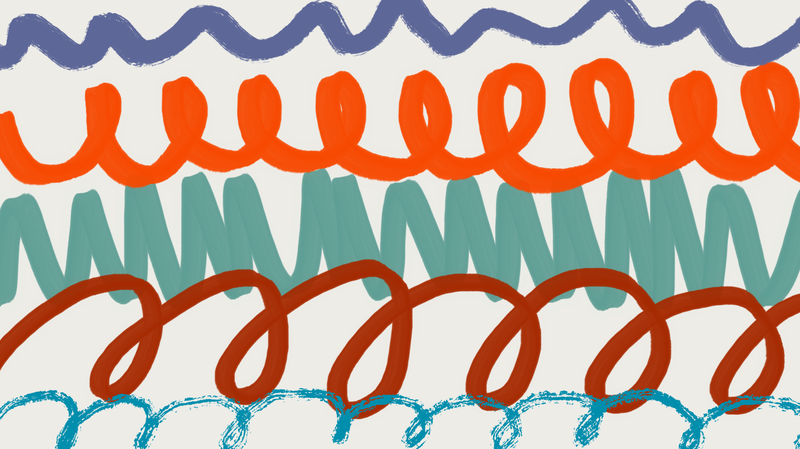Relationships are the lifeblood of nonprofits, but few organizations have an intentional process to steward them.
Before we can design a framework, we must first examine how relationships exist in the real world.
What makes a relationship?
Here are some starting points.
Context
We meet people in context. We have school friends, childhood friends, church friends, and friends we watch Love Island with. Where we bump into people is essential information and helps us imagine where we could engage in the future.
And let’s not assume that we only interact with people in one context; it’s a small world. Sometimes your work friends meet your family, or your church friends happen to be your childhood friends. People engage with us in many and often overlapping contexts.
Wavy
Relationships ebb and flow. You might be close to someone for a time, and then they fade into the background. This is natural. People move away, change jobs, and change interests. Sometimes your Love Island friends decide to start reading books.
When thinking about these waves, it's important to note that hard breaks are rare. It is much more common to drift apart quietly.
Rituals
Because relationships ebb and flow, people often build rituals to maintain them. People form lifelong friendships at school in part because it requires daily interactions. It's hard not to become close to people you spend so much time with. Work friends are the same way. Church creates weekly interactions. Annual vacations are another ritual, and if you travel to the same destination, this adds a specific context to the ritual. All of these patterns of interaction serve as anchors to relationships that might otherwise drift apart.
Discovery
All relationships start with a period of discovery. This is a time when our mammalian brains look for common interests and test whether we can make one another laugh. Frequent interactions (rituals) in a safe place (context) support this discovery.
Mutuality
Each party has to give a little. What we can offer may be different, but relationships are built on sacrifice. Rich relationships are built on ever-increasing layers of the gifts we share with one another. Lopsided relationships at their best drift apart and at their worst lead to heartbreak.
Call and Response
Someone has to make the first move. Ask her to dance. Invite them to coffee. Send them your draft. These invitations require vulnerability because they expose one to the possibility of rejection. The invited now must respond by taking action. They may say yes or no. (Or “no, thank you.” Or “Nope.” Or “Let me get back to you.”) For all that is holy, don’t say nothing. We are not ghosts. We are flesh and blood.
Destination
Relationships are going somewhere. It's okay to have an agenda. (Even if the agenda is no agenda.) People who’ve been dating for a while sometimes ask one another, “Where is this going?”
Some people just want to sell you stuff (they haven’t committed to mutuality), but lots of people want to do something. They are on a journey, they are going somewhere, and they don’t want to go alone.
We enter into relationships because there is something in it for us! As long as we are committed to mutuality, this is good (and true), and we should be open about it.
But what does this have to do with nonprofits?
Nonprofits live and breathe relationships. How many nonprofit leaders have you heard say, “Everything we do is built on relationships.”
- Conferences are contexts.
- Listening tours are discovery.
- A fundraising letter is an invitation.
- An annual gala is a ritual, a context, and an invitation all in one.
You also see this in the problems they describe.
- Silos grow from an unwillingness to leave one’s context.
- Interventions in communities fail when they lack mutuality.
- Donors stop giving when the relationship feels lopsided.
- Repeatedly tapping the same pool of funders indicates weak commitment to discovery.
These problems arise when organizations fail to nurture relationships.
Saying relationships are important is fundamentally different than making them important.
Some hard questions
Before we design a process to nurture relationships, we have to ask ourselves some hard questions:
- Will we choose to leave our context to discover new relationships?
- Will we commit to rituals that reinforce our existing relationships?
- Can we be honest about our limitations so that we don’t overextend?
- Can we accept that relationships will ebb and flow and not interpret this as rejection?
- Can we clearly articulate our destination and have the courage to invite others to join us?
Once you can answer these questions, you are ready to design an intentional process to nurture relationships.
Notice how I never said the word “software”?
Exactly.
Something I choose to believe
Relationships are a lot of work, particularly when done right. People’s interests change. They move away. Or hurt our feelings. We are a messy bunch. It’s easy to become transactional or cynical.
Here’s what I choose to believe:
If you show up for someone.
Give of yourself.
Meet them where they are.
And be present with them.
No matter the outcome, nothing was wasted.
It's a small world, and you never know, we might live forever.
Until next time,
Ted

.png)




